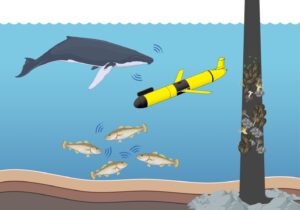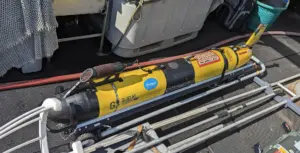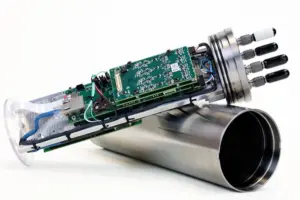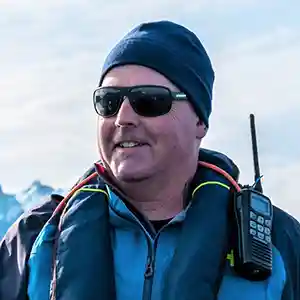Real-time Passive Acoustic Monitoring for Aggregations of Spawning Cod at South Fork Wind Farm, Revolution Wind, and Sunrise Wind Farms
Ørsted and Eversource Energy partner with Rutgers University and JASCO Applied Sciences to develop a near real-time monitoring solution for Atlantic cod.
Developed by Ørsted and Eversource Energy, South Fork Wind (SFW) is a 12-turbine offshore wind energy project located in federal waters off the Northeast coast. The 130 MW wind farm began construction in early 2022 and is expected to be operational by the end of 2023. Upon completion, South Fork Wind (SFW) will produce enough clean energy to power 70,000 homes. The Revolution Wind project, OCS-A 0486, will have 65 turbines with an estimated capacity of 704 MW of energy, capable of powering nearly 250,000 homes. The Sunrise Wind project, OCS-A 0487, will have up to 84 turbines and a total capacity of 924 MW of energy that BOEM estimates could power more than 320,000 homes.

The wind farm site is located near an area with complex habitats, including a known spawning habitat for Atlantic cod.
Atlantic cod form spawning aggregations throughout their
geographic range, and male cod exhibit a complex set of spawning and courtship behaviors that includes vocalizations (low frequency grunts). These vocalizations can be detected using Passive Acoustic Monitoring to identify where and when spawning activity is occurring.
Due to the known presence of spawning cod near the wind farm area, the project’s approval included permit conditions to perform monitoring and adaptive management during the cod spawning season. In order to meet this requirement, Ørsted partnered with researchers at Rutgers University and JASCO Applied Sciences to develop a near real-time monitoring solution for Atlantic cod.
spawning cod near the wind farm area, the project’s approval included permit conditions to perform monitoring and adaptive management during the cod spawning season. In order to meet this requirement, Ørsted partnered with researchers at Rutgers University and JASCO Applied Sciences to develop a near real-time monitoring solution for Atlantic cod.
During the monitoring study, the objective was to determine the presence or absence of spawning cod within the windfarm lease area and to use the collected data to determine if an adaptive management strategy would need to be implemented during site preparation and construction.
 A Slocum glider equipped with JASCO’s OceanObserver™ passive acoustic monitoring (PAM) system and oceanographic sensors was used to monitor for cod spawning activity within the project area. The glider can cover approx. 15km per day and was programmed to perform alternating east-west and north-south transects of the wind farm area.
A Slocum glider equipped with JASCO’s OceanObserver™ passive acoustic monitoring (PAM) system and oceanographic sensors was used to monitor for cod spawning activity within the project area. The glider can cover approx. 15km per day and was programmed to perform alternating east-west and north-south transects of the wind farm area.
JASCO’s OceanObserver™ system onboard the glider processed the PAM data continuously using an automated grunt detector to quickly analyze the incoming data and assess whether any candidate cod grunts were detected. The data was transmitted as frequency contour messages to the acoustic analysts ashore who then reviewed and verified them as cod grunts.

Josh Kohut
Rutgers University

Grace Saba
Rutgers University

Scott Carr
JASCO Applied Sciences
